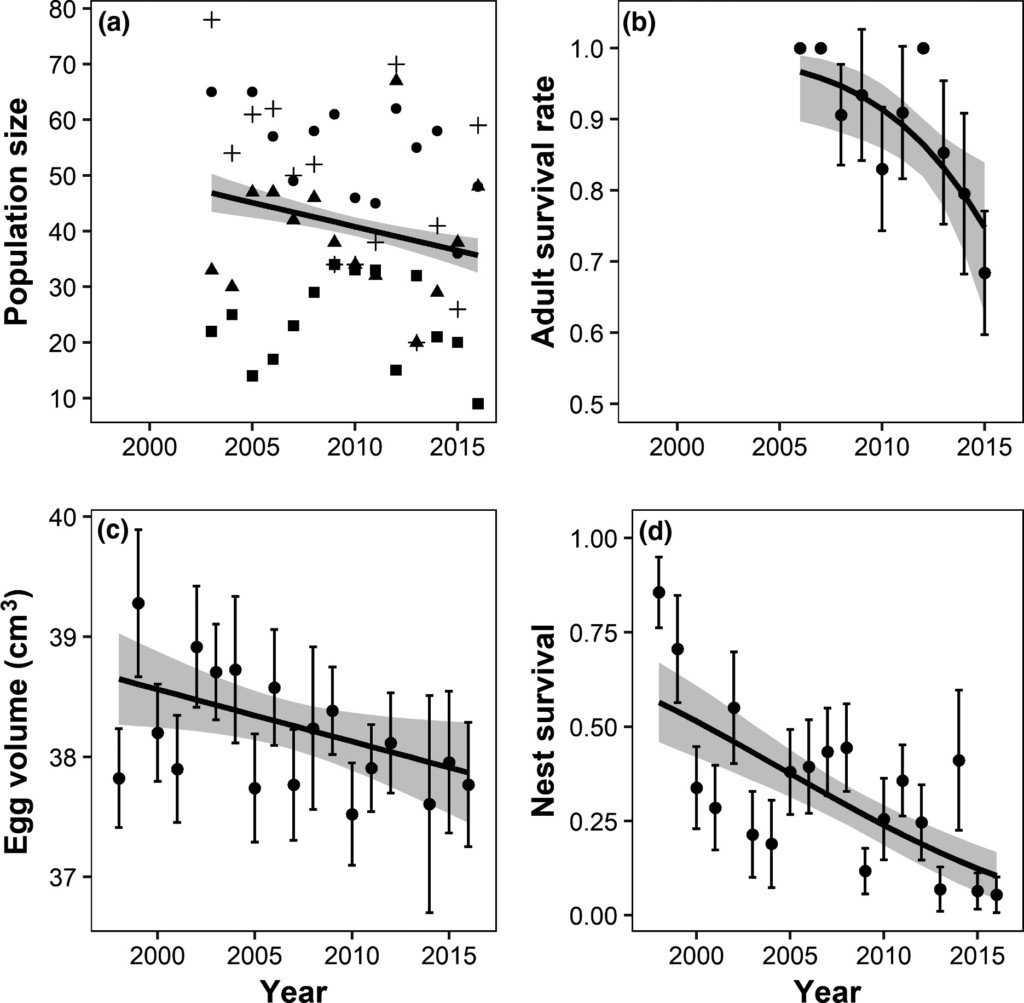LINKED PAPER
Long‐term decline despite conservation efforts questions Eurasian Stone‐curlew population viability in intensive farmlands. Gaget, E., Fay, R., Augiron, S., Villers, A. & Bretagnolle, V. 2019. IBIS. DOI: 10.1111/ibi.12646. VIEW
The intensification of agriculture negatively impacted many farmland species (Donald et al. 2001). However, exact mechanisms behind the decline of these bird population is often unknown, even for well-studied species. Take the Eurasian Stone-curlew (Burhinus oedicnemus): although this wader suffered population declines during the second half of the last century, little is known about the current state of several populations. Indeed, BirdLife reports an unknown population status for 46% of European countries. A recent study assessed the situation in France, which holds roughly one fifth of the European Stone-curlew populations.
Nesting success
A long-term dataset spanning 19 years (1998-2016) allowed ornithologists to examine the population dynamics of Stone-curlew in central-western France. The monitoring of 566 nests culminated a pessimistic picture: all demographic parameters were negative. Only one third of the nests were successful. The nest failures were mainly due to desertion and predation (85%). The remaining 15% were caused by agricultural work. However, the percentage of nest destruction by agricultural practices has declined over the years by warning farmers about the presence of Stone-curlew nests in their fields.

Figure 1 All demographic parameters of the French Stone-curlew populations show a negative trend: (a) Population size at different locations (indicated with distinct symbols), (b) Adult survival, (c) Egg volume, and (d) Nest survival.
Adult survival
Apart from nesting success, adult survival also displayed a negative trend. This is especially worrisome because population growth is highly sensitive to the survival of adult birds (Sæther & Bakke 2000). The exact reason behind the declining survival rate is not known, but the researchers suspect that food limitation plays an important role. This idea is supported by a significant decrease in egg volume over the 19 years of monitoring. Another possibility concerns carry-over effects from the wintering areas. Birds might encounter problems in those areas and arrive in bad condition at their breeding grounds (Harrison et al. 2011). But this hypothesis requires further research.
Conservation
Despite ongoing conservation measures, the French Stone-curlew populations are declining drastically. This negative trend could be reversed by expanding conservation measures to larger spatial scales and create safe habitats that reduce nest destruction and provide more food resources. This is certainly a difficult challenge but the successful conservation efforts in the UK show that it is possible. Here, the Royal Society for the Protection of Birds (RSPB) managed to overturn a desperate situation in the 1980s and establish a viable breeding population of Stone-curlews in the following decades (Evans & Green 2007). There is still hope for the Stone-curlew.
References
Donald, P. F., Green, R. E. & Heath, M. F. 2001. Agricultural intensification and the collapse of Europe’s farmland bird populations. Proceedings of the Royal Society of London. Series B: Biological Sciences 268: 25-29. VIEW
Evans, A. D. & Green, R. E. 2007. An example of a two-tiered agri-environment scheme designed to deliver effectively the ecological requirements of both localised and widespread bird species in England. Journal of Ornithology 148: 279-286. VIEW
Harrison, X. A., Blount, J. D., Inger, R., Norris, D. R. & Bearhop, S. 2011. Carry‐over effects as drivers of fitness differences in animals. Journal of Animal Ecology 80: 4-18. VIEW
Sæther, B. E. & Bakke, Ø. 2000. Avian life history variation and contribution of demographic traits to the population growth rate. Ecology 81: 642-653. VIEW
Image credits
Featured image: Eurasian Stone-curlew Burhinus oedicnemus | Max Biondi | CC BY-SA 4.0 Wikimedia Commons




